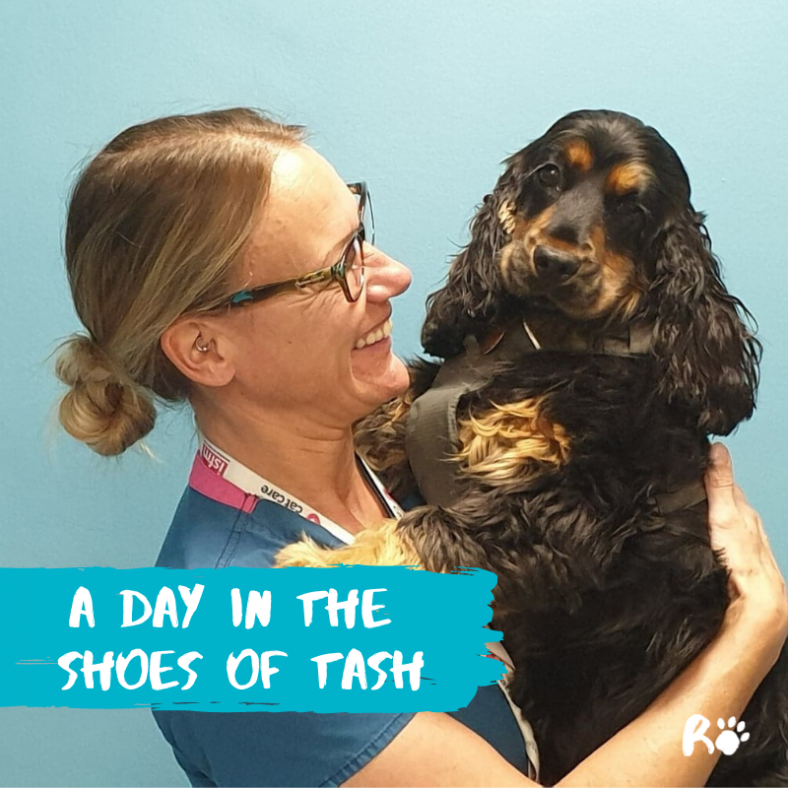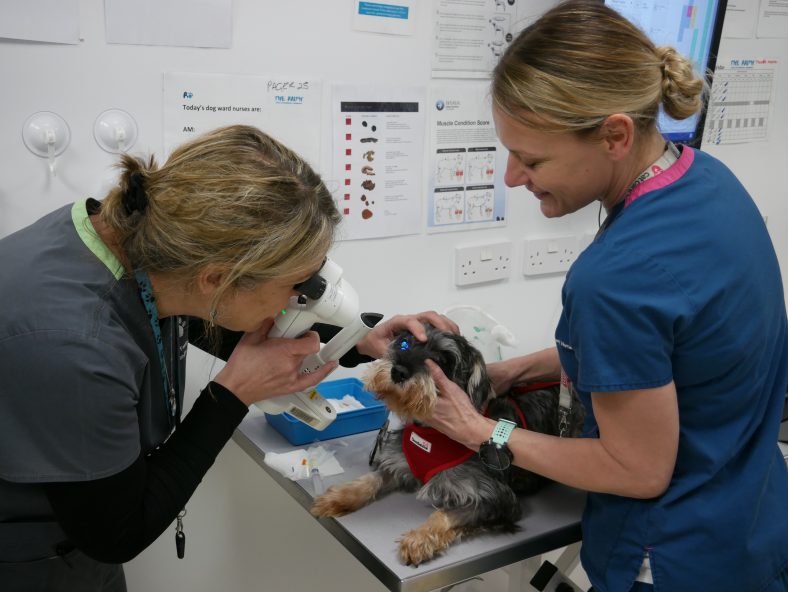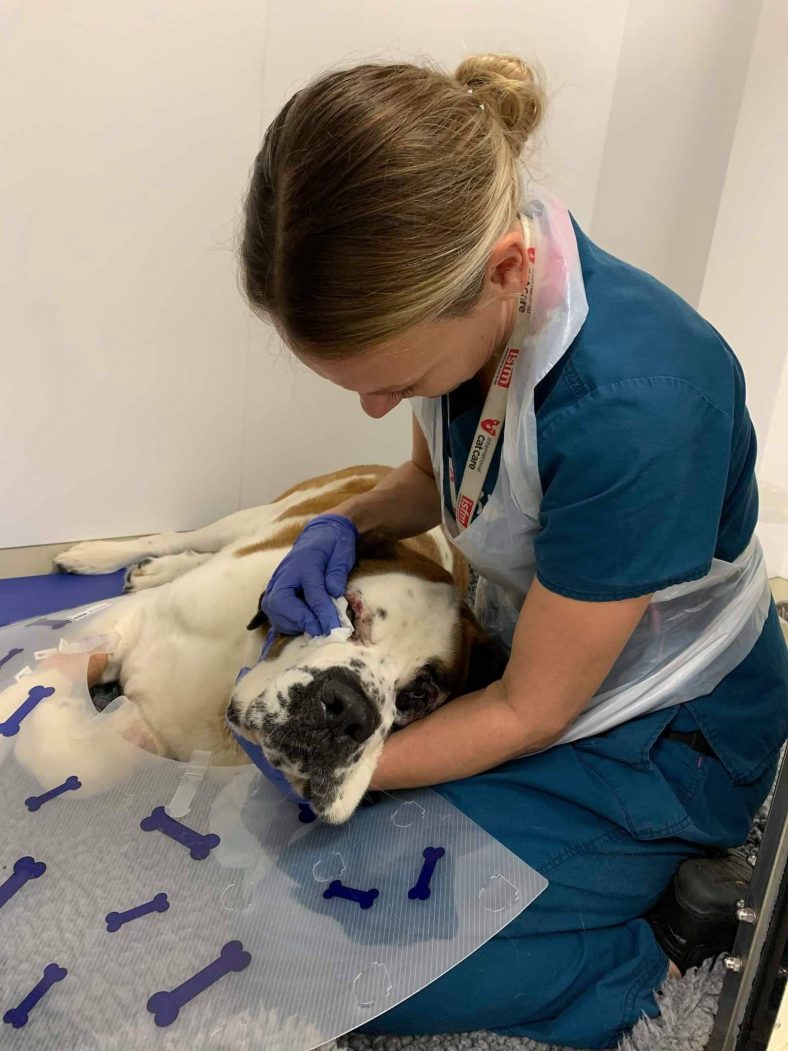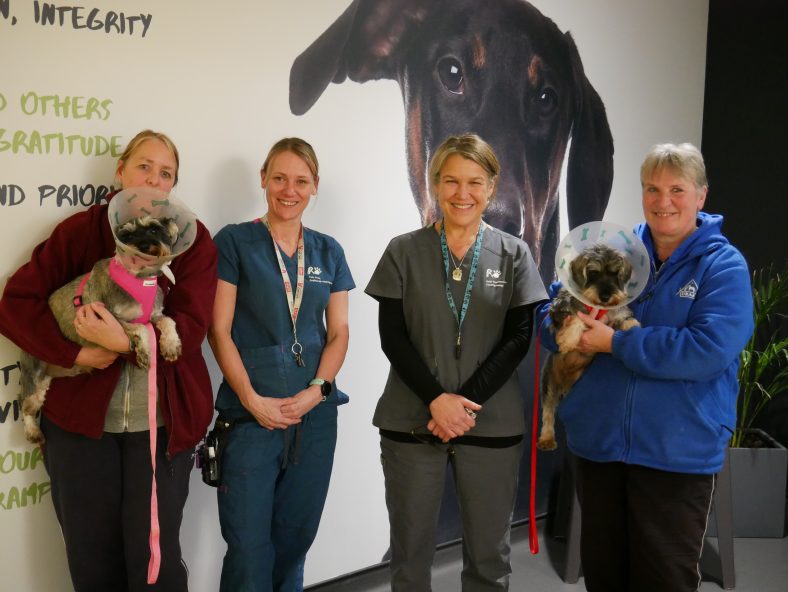Our Community
A day in the shoes of Tash, Ophthalmology Nurse

“One of the most enjoyable moments of my role is reuniting patients with carers after cataract surgery. They come into the hospital blind and leave able to see their carers for the first time. I feel incredibly privileged to experience this, it is a precious moment and can be quite emotional.” – Tash Knox.
In this edition of ‘A day in the shoes of…’ series, we meet our wonderful Ophthalmology Nurse, Tash…
“My day usually starts with coffee and a chat with the rest of the Ophthalmology team. I feel incredibly fortunate to work alongside Heidi Featherstone, who is a recognised RCVS and EBVS® European Specialist in Veterinary Ophthalmology, she is a font of all knowledge in everything ocular. We have recently expanded our team with two enthusiastic Residents, Emily and John. Having joined The Ralph from the very beginning, it is awesome to see how the team has grown.
During our morning meeting we discuss any inpatients we have staying with us, procedures we have booked in for the day along with new cases and any emergencies. After this meeting, I review our patients’ histories and look at their likes and dislikes. This process helps us to make our patients’ stay with us as comfortable as possible.
I started my career volunteering in a local practice, which gave me a real insight into the veterinary world. This inspired me to work hard at school and gain the qualifications necessary to start my nurse training. I felt it was really important to gain as much experience as possible, as there are certain aspects of the job that are not for the faint hearted. When I first started monitoring anaesthetics I kept passing out! I was encouraged it would not last and sure enough after a while I became less affected by gory bits. So, there is hope if you are a bit squeamish and want to embark on a nursing career.

Tash assisting Heidi with an examination of Wotsit’s eyes.
We see patients with all sorts of eye-related conditions, but cataracts is a common one. To treat a cataract, and restore our patient’s vision, we perform a technique called phacoemulsification. This type of surgery is performed through a small incision to the eye, with the aid of an operating microscope. The cataract (cloudy lens) is removed in each eye, and an artificial lens implant is placed. Patients who arrive for cataract surgery need intensive eye medications before they go to surgery, as well as a detailed examination from our team. I assist with these examinations and start their medical treatment (under the direction of the Specialist Vet) in preparation for surgery.
Some days, I am lucky enough to head into theatre to assist with these surgeries. I enjoy helping to get our patients ready and comfortable for their procedure, as well as preparing the specialist equipment. Most of our surgeries, including cataract surgery, require the use of a microscope. There is a camera attached to the microscope which enables us to see what is happening during intraocular surgery in great detail. We can also use the camera to record the surgery for educational purposes – it is amazing to watch the surgeon’s work close-up.

Tash providing care for Yoshi after his entropion surgery.
I feel proud to be a Champion of Patient Safety at The Ralph. As part of my role, I help to ensure safety checklists are completed, and we talk about any complications we may uncover prior to any procedures. This process is important; it prepares us should any complications occur so that we can deal with them in a calm manner and give our patient the best possible outcome.
After cataract surgery, our patients need to stay really calm. It can be startling for a patient who has been blind to suddenly have their sight back. If a patient becomes stressed or excited this can cause spikes in intraocular pressure and increases the risk of post-operative complications. Therefore, my role after the surgery is to monitor this and communicate with the team should any changes or concerns occur, along with providing the post-surgery treatments. Some of our eye medications need to be made up in-house, I am responsible for making sure this is done alongside our lovely Pharmacist, Sam.
When our patients go home, I help to support the carers with the required at-home care. Most patients will need to have many eye-drops throughout the day to help the eye to heal, which can be stressful for the carers and their pets. I help to put the carers’ minds at ease, by providing demonstrations and sharing treatment charts to help the carers keep on top of the different types of medications and when to give them to their pet. It is important we have an understanding of the carers’ lifestyle as we can fine-tune treatments to help our carers give their pets the best chance.

Tash with Heidi as Wotsit and Wilma return home with their foster carers post-cataract surgery.
One of the most enjoyable moments of my role is reuniting patients with carers after cataract surgery. They come into the hospital blind and leave able to see their carers for the first time, and for some, the first time in a long time. I feel incredibly privileged to experience this, it is a precious moment and can be quite emotional.
At the end of an exhausting but incredibly rewarding day, I will pop down to wards for some goodbye cuddles with our patients before I head home. I am constantly motivated by those who I am surrounded by – people who go out of their way to help others. Whether that’s helping our furry friends, or sharing experiences that help us to grow.
Although I have found my passion with eyes, I also enjoy working in our Intensive Care Units at the weekend. It gives me the opportunity to develop my critical care skills, as well as learning new ones. The Emergency and Critical Care team are incredibly supportive and are always willing to help you.”
Thank you for reading our latest blog. If you can’t wait for the next instalment of our “A day in the shoes of…” series, you can meet the rest of our team here.
Take care,
Team Ralph
